15 years one-stop China custom CNC machining parts factory
 369 |
Published by VMT at Aug 05 2024
369 |
Published by VMT at Aug 05 2024
A rivet is a special type of fastener composed of a head and a shank, used to connect two parts or components with through-holes. Its working principle is to achieve a secure connection between parts through the self-deformation or interference fit of the rivet. Rivets are widely used in various industries, including automotive manufacturing, shipbuilding, aerospace, construction, and are an indispensable part of mechanical engineering.
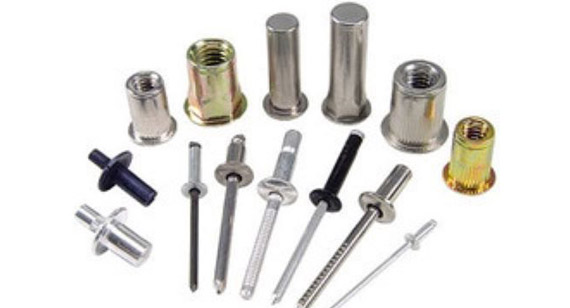
The primary use of rivets is to connect two or more parts, securing and fixing them together through their unique connection method. The purpose of rivets is to ensure the solidity and reliability of the connection, preventing parts from loosening or detaching under force. Rivets perform well in various complex environments, such as high temperature, high pressure, and vibration conditions, providing stable connecting effects.
The working principle of rivets is mainly based on the deformation characteristics of metal materials. During the riveting process, the rivet is inserted into the pre-made hole, and then pressure is applied to the head of the rivet by tools, causing it to deform and tightly adhere to the connected parts, forming a solid connection. The deformation methods of rivets include expansion and stretching, and through these two methods, rivets can achieve good vibration resistance and tensile strength.
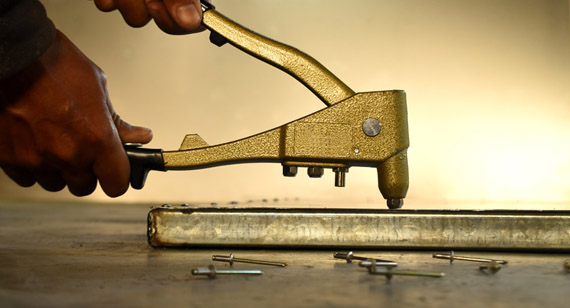
Easy Installation: The installation process of rivets is relatively simple, without the need for complex equipment and tools, especially convenient for single-sided material construction.
Versatility: Rivets are suitable for various materials, including metals and non-metals, and can work in a variety of environments, such as humid and corrosive conditions.
Low Cost: Compared with other connection methods, the manufacturing and installation costs of rivets are relatively low, making them suitable for mass production and use.
High Strength: Rivets achieve connections through their own deformation, with high connection strength, capable of withstanding significant tensile and shear forces.
Disadvantages of Using Rivets
Durability: In some extreme environments, rivets may fail due to material aging or fatigue, affecting the longevity of the connection.
Not as Seamless as Welding: Compared to welding, the sealing and integrity of riveted connections may be slightly inferior.
Not Leak-Proof: Riveted connections are not suitable for applications requiring strict sealing, such as high-pressure vessels or pipeline connections.
Step 1: Preparation
First, prepare the parts to be connected, rivets, and tools such as a rivet gun. Choose the appropriate rivet specifications and types based on the material and connection requirements of the parts.
Step 2: Drilling
Drill holes in the parts to be connected that match the diameter of the rivet. The hole positions should be accurate, with diameters and depths that meet the requirements of the rivet to ensure a solid connection.
Step 3: Rivet Installation
Insert the rivet into the pre-drilled hole, ensuring that the rivet matches the hole perfectly and that the head of the rivet is in full contact with the connecting part.
Step 4: Applying Pressure
Use a rivet gun or other tools to apply pressure to the head of the rivet, causing it to deform. During the application of pressure, maintain a steady force and speed to ensure even deformation of the rivet.
Step 5: Quality Check of the Connection
After the riveting is complete, inspect the connected area to ensure that the riveting is solid, with no looseness or deformation. If there are any issues, adjustments or re-riveting should be done promptly.
Step 6: Cleanup
After completing the riveting, clean up the site, ensuring no leftover rivets or tools are left behind, and maintain a tidy working environment.
The materials for manufacturing rivets are diverse, commonly including aluminum, stainless steel, steel, copper, and brass. Each material has its own characteristics and applications, and choosing the right material is crucial to ensure the solidity and reliability of the connection.

Aluminum rivets are lightweight and have good corrosion resistance, making them suitable for applications where weight reduction is needed, such as in aerospace. However, their strength is relatively low, and they are not suitable for connections that bear high loads.
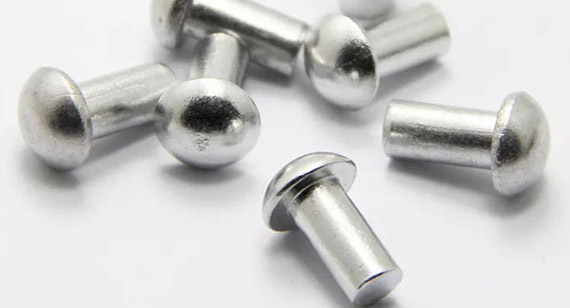
Stainless steel rivets have good corrosion and oxidation resistance, making them suitable for harsh environments like wet and corrosive conditions. They have high strength and can withstand significant tensile and shear forces.
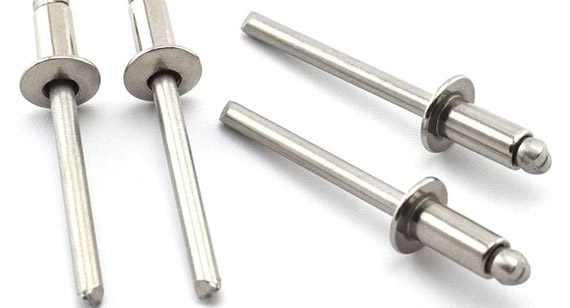
Steel rivets have high strength and toughness, suitable for applications that require bearing high loads. However, their corrosion resistance is relatively poor, and they require anti-corrosion treatment.
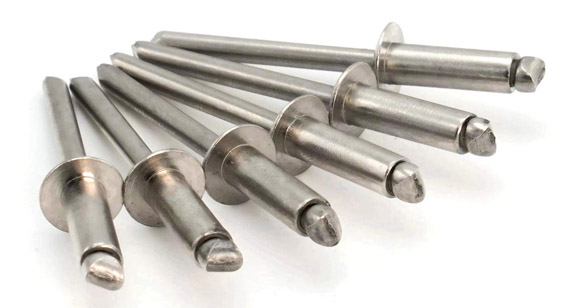
Copper rivets are known for their excellent electrical and thermal conductivity, as well as certain corrosion resistance. They are often used for electrical connections, especially in applications that require good conductivity and low resistance. However, copper rivets are relatively expensive and may not be the best choice for applications that require high strength.
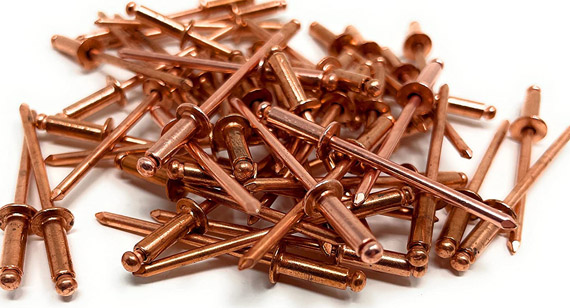
Brass rivets, an alloy of copper and zinc, have good workability and corrosion resistance. They are moderately priced and widely used in general industrial applications, such as construction and automotive manufacturing. Although not as strong as stainless or steel rivets, brass rivets are sufficient for most conventional connection needs.
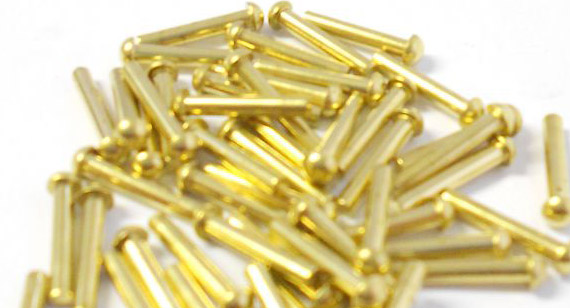
The manufacturing industry utilizes a wide variety of rivets, each with specific application scenarios and advantages. Here are eight common types of rivets and their characteristics:
Solid Rivets:
The most basic and common type of rivet. Made from solid material, they are deformed by riveting tools under pressure to securely connect two parts. Solid rivets are suitable for various materials and environments and are one of the most versatile rivets.
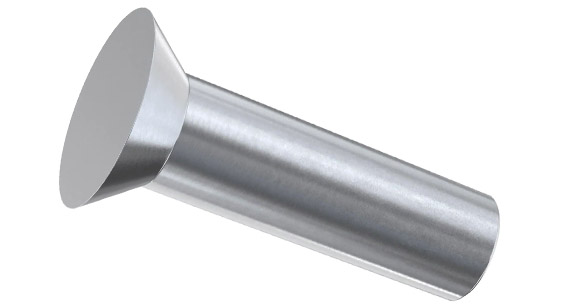
Blind Rivets:
Also known as pull-through or blind rivets, they are ideal for situations where access is available from only one side, such as single-sided assembly or closed structures. Their design allows for riveting without the need to penetrate a second piece of material. During the riveting process, the internal mandrel is pulled out, causing the rivet to expand and secure in the hole.
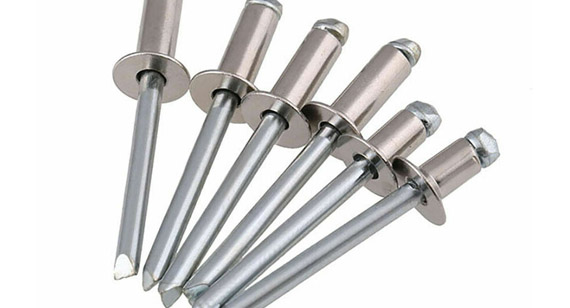
Drive Rivets
Drive rivets are installed using a specific driver tool, providing a more precise riveting effect. They are commonly used in applications that require high-strength connections or precise control, such as aerospace and precision machinery manufacturing.

Self-Piercing Rivets: High column strength
Self-piercing rivets combine stamping and riveting processes, allowing for direct installation without pre-drilled holes. They are driven into the material by a punch head, forming a secure locking structure within the material. Self-piercing rivets are especially suitable for thin sheet connections and have high column strength, suitable for withstanding shear and tensile loads.
Open Rivets: Home repair rivets
Open rivets are known for their easy installation and are commonly used for home repairs and DIY projects. They typically have a larger head and an open design, making them easy to install and remove manually. While not as strong as other rivets, open rivets are sufficient for general repair needs.
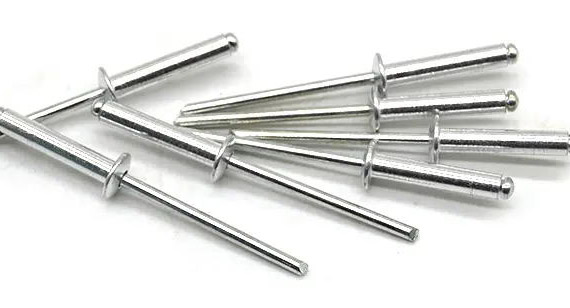
Tubular Rivets: With hollow ends
Tubular rivets have a hollow shank design, which reduces weight and material costs. They are commonly used in applications requiring lightweight and cost-effective solutions, such as automotive manufacturing and construction. The installation process for tubular rivets is similar to that of solid rivets, but attention should be paid to the impact of the hollow part on connection strength.
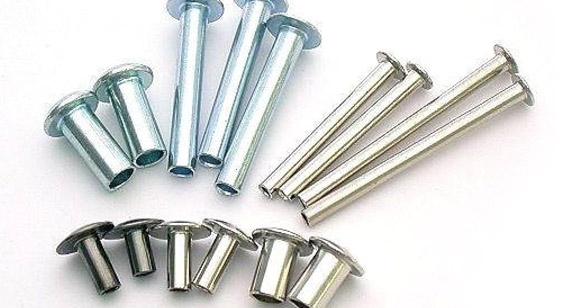
Countersunk Rivets: Also known as flush rivets
Countersunk rivets have a low-profile head design that can be embedded below the material surface to form a flush connection. They are commonly used in applications that require a neat appearance, such as automotive bodies and furniture manufacturing. The installation of countersunk rivets requires precise hole positioning and depth control to ensure a beautiful and secure connection.
Friction Lock Rivets: Similar to expansion bolts
Friction lock rivets create a connection by generating friction locking force within the connected material. Their working principle is similar to that of expansion bolts, but they have a more compact structure and are easier to install. Friction lock rivets are suitable for applications that require high extraction resistance and resistance to vibration, such as railway track connections and heavy equipment fastening.
In addition to the eight common rivet types mentioned above, there are many other basic rivet types, each with a unique design and purpose.
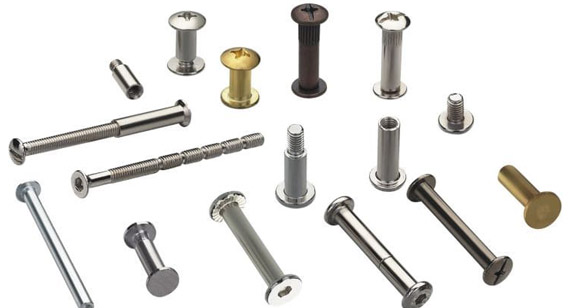
Threaded Rivets
Threaded rivets have threads on the shank, providing a more secure locking effect. They are typically used in applications that require higher connection strength and anti-loosening performance, such as heavy machinery and bridge structures.
Dome Head Rivets
Dome head rivets feature a rounded head design that reduces pressure concentration on the connected surfaces. They are suitable for applications where surface damage or aesthetic requirements need to be avoided, such as decorative items and furniture manufacturing.
Mushroom Head Rivets
Mushroom head rivets have a head shape similar to a mushroom, with a large contact area and the ability to disperse pressure. They are commonly used in applications that need to withstand high pressure or impact loads, such as automotive suspension systems and industrial equipment fastening.
Pan Head Rivets
Pan head rivets have a flat and wide head design, providing a larger bearing area and enhancing the stability of the connection. They are often used in applications that require even pressure distribution or a larger head to accommodate gaskets, such as automotive bodies and sealed containers.
Different types of rivets, due to their unique designs and material properties, are widely used across various industries and fields. Understanding these applications helps us better select the appropriate rivets to meet specific engineering needs.
Construction: Building and Joints
In construction, rivets are commonly used to connect steel structures, aluminum alloy doors and windows, curtain walls, etc. Solid rivets, stainless steel rivets, and self-piercing rivets are ideal choices for these applications due to their high strength and corrosion resistance. Especially in situations requiring rapid construction and ensuring structural safety, rivet connections are particularly important.
The automotive industry is one of the most widely used fields for rivets. From body manufacturing to interior assembly, various types of rivets play a key role. Blind rivets are particularly common in body panel connections due to their suitability for single-sided construction. Self-piercing rivets, on the other hand, improve production efficiency and connection quality as they can achieve connections without pre-drilled holes.
In the jewelry industry, rivets, though small, play a significant role. They are commonly used to secure gems and set ornaments. Since jewelry products have high requirements for aesthetics and refinement, small and delicate rivets are often chosen, such as thin rivets or specially designed decorative rivets.
Aerospace Industry
The aerospace industry has extremely strict requirements for connectors, which need to withstand extreme environmental conditions and high mechanical loads. Therefore, this field widely uses high-strength, corrosion-resistant, and high-temperature-resistant rivets, such as titanium alloy rivets and stainless steel rivets. At the same time, to ensure the safety and reliability of the connection, the aerospace industry also often employs special riveting processes and inspection equipment.
Sports Equipment
Sports equipment, such as bicycles and snowboards, needs to withstand high-intensity impacts and vibration loads. Therefore, in the manufacturing process, high-strength and fatigue-resistant rivets are commonly used for connections. These rivets must not only have good mechanical properties but also be able to adapt to complex and changing usage environments.
Riveting and welding are two common methods of joining, each with its own advantages and disadvantages, suitable for different occasions and needs. When choosing a joining method, it is necessary to consider a combination of factors such as materials, cost, application, strength, speed, and safety.
Riveting is suitable for a variety of materials, including metals and non-metals. Welding, on the other hand, focuses more on the joining of metal materials. For certain special materials or composite materials, welding may not be able to achieve effective connections, while riveting may be a more appropriate choice.
Cost
Welding usually requires higher equipment and labor costs, especially for large or complex structures. Riveting is relatively simple and quick, with lower costs. However, in some applications, the total cost of riveting may increase due to the high cost of rivet materials themselves or the need for special installation tools.
Application
Welded connections generally have higher integrity and sealing performance, suitable for occasions that require strict sealing or overall strength requirements. Riveting is more suitable for situations that require rapid construction, single-sided construction, or frequent disassembly for maintenance.
Strength
Welded connections usually have higher connection strength and can withstand greater tensile and shear forces. However, in some cases, the strength of welded connections may be reduced due to welding defects or issues in the heat-affected zone of the material. In contrast, although the strength of riveted connections is slightly less, they are more reliable and stable.
Speed
Welding usually requires a longer preparation and cooling time, and the welding speed is affected by various factors. Riveting, on the other hand, is relatively simple and fast, which can greatly improve production efficiency.
Safety
The welding process may generate high temperatures, sparks, and harmful gases, and other safety hazards. Riveting is relatively safe, without worrying about these issues. However, attention should still be paid to the safety of rivet splashing and the use of tools during the operation.
As one of the important fasteners in the field of CNC machined parts manufacturing, rivets come in a variety of types and have a wide range of applications. Understanding the different types of rivets and their workflow, purpose, and material characteristics is of great significance for choosing the right joining method and improving product quality. At the same time, by comparing the advantages and disadvantages of riveting and welding, as well as their application scenarios, we can more reasonably choose the joining method to meet specific engineering needs.
What is Riveting?
Riveting, also known as "riveting," is a method of joining multiple parts using a rivet, which is inserted into pre-drilled holes and then upset or headed on one side, creating a secure connection. Riveting can be categorized into three types based on the mobility of the joined parts: slip riveting, which allows parts to rotate relative to each other and is not a rigid connection (e.g., scissors, pliers); solid riveting, where parts cannot move relative to each other and form a rigid connection (e.g., angle rulers, nameplates on padlocks, bridge construction); and sealed riveting, which provides a tight rivet seam that prevents the leakage of gases or liquids and is also a rigid connection.
What is the Strongest Type of Rivet?
There is no absolute standard for the strongest rivet, as the strength of a rivet depends on various factors, including material, structure, and usage environment. Generally, steel rivets are widely used in heavy machinery, shipbuilding, and bridge construction due to their high strength and pressure resistance, making them one of the stronger types of rivets. However, in special environments that require high corrosion resistance, stainless steel rivets may be more suitable.
What are the 4 Types of Rivets?
Rivets come in a wide variety of types, and it is challenging to strictly limit them to four categories. However, here are several common types of rivets:
Solid rivets: Often used in metal connections subject to shear forces.
Hollow rivets: Used where shear forces are not significant, commonly connecting non-metal parts such as plastic, leather, wood, and canvas.
Semi-hollow rivets: Often used in metal sheets and other non-metal material parts.
Blind rivets: Including open-type blind rivets and closed-type blind rivets, characterized by the rivet stem locking inside the rivet body after riveting, preventing loosening.
What is the Most Common Type of Rivet?
The most common type of rivet may vary depending on the field of application. However, in general industrial production and daily life, solid rivets, pan head rivets, and blind rivets are more common due to their wide range of applications and practicality.
What is the Difference Between a Rivet and a Regular Rivet?
The term "rivet" itself encompasses a broad category of various types of rivets. Thus, the expression "rivet vs. regular rivet" might be somewhat ambiguous. If "regular rivet" is understood as the most basic rivet without special design features, then other types of rivets (such as blind rivets, hollow rivets, etc.) mainly differ in structure, function, and usage scenarios. For example, blind rivets lock the stem inside the rivet body after riveting, preventing loosening, which is not a characteristic of regular rivets.
What are the Standard Diameter Sizes for Rivets?
Rivet diameter sizes vary depending on the type and purpose. Generally, rivet diameters can range from a few millimeters to several tens of millimeters. Common rivet diameters include 2.4mm, 3mm, etc. However, the specific diameter size still needs to be determined based on the specific application scenario and requirements.
Which Rivet Material is Best for Metal?
For metal connections, steel rivets and stainless steel rivets are more suitable materials. Steel rivets have high strength and pressure resistance, suitable for heavy machinery, shipbuilding, and bridge construction. Stainless steel rivets have excellent corrosion resistance, suitable for environments requiring high corrosion resistance. However, it should be noted that when selecting rivet materials, other factors such as cost and weight also need to be considered.
Are Rivets Stronger Than Screws?
Rivets and screws each have their characteristics and applicable scenarios, and it is not simple to compare which is stronger. Rivets mainly connect parts by upsetting the stem and forming a head through axial force, with high connection strength and less likely to loosen. Screws connect parts by cooperating with nuts through threads, offering a more flexible and easily dismountable connection method. Therefore, when choosing connectors, the appropriate connection method should be selected based on specific application scenarios and requirements.
What is the Difference Between a Blind Rivet and a Solid Rivet?
The main differences between blind rivets and solid rivets lie in their structure and riveting methods. Blind rivets consist of a stem and a mandrel, and during the riveting process, the mandrel is pulled to break and lock inside the rivet body, achieving a secure connection. This design makes blind rivets not easily loose after riveting and easy to install, suitable for occasions requiring fast and reliable connections.
Solid rivets are one-piece, without a separate mandrel part. During the riveting process, the stem of the solid rivet undergoes plastic deformation when subjected to axial force, filling and expanding the rivet hole to achieve connection. Solid rivets have high strength and are suitable for occasions that need to withstand significant shear forces.
What is the Difference Between a Rivet and an Advertising Rivet?
"Advertising rivet" is not a standard classification of rivets; it may refer to rivets used for specific billboard or sign installations or rivets with special designs or functions for specific advertising or promotional purposes. Therefore, when comparing "rivets" with "advertising rivets," it is important to note that "advertising rivets" may not be universal but customized according to specific application scenarios and requirements.
In general, regular rivets (the rivets we usually refer to) come in various types and specifications, suitable for connecting various metal and non-metal materials. Advertising rivets may focus more on aspects such as appearance, installation convenience, or compatibility with advertising materials to meet specific advertising and promotional needs.
In summary, as an important connector, rivets have a wide range of applications in various fields. Understanding the characteristics of different types of rivets and the differences between them helps us better choose the appropriate connection method, improving product quality and safety.
